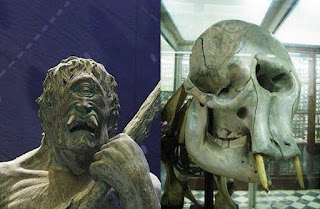The fossil skulls of Pleistocene dwarf elephants scattered throughout the coastal caves in Italy
The fossil skulls of Pleistocene dwarf elephants scattered throughout the coastal caves in Italy and the Greek islands most likely inspired the one-eyed Cyclopes in ancient Greek mythology.
During the Pleistocene ice age (2,580,000 to 11,700 years ago), land bridges emerged, allowing ancient elephants to move to emerging islands to escape predators and/or find new food sources.
As sea levels rose around the Mediterranean, these ancient elephants became trapped and had to compete for limited food, leading to the island rule, where mammals tend to shrink or grow depending on resource availability in their environment.
The isolated ancient elephants evolved into different species depending on the island they found themselves on. Those on Cyprus were approximately 6 feet tall, nearly double the size of the ones found on Sicily and Malta. Humans arrived on the islands around 11,000 years ago, leading to the over-hunting and extinction of the ancient elephants within a century.
By the time the Romans and Greeks came to occupy the Mediterranean islands, all that remained were skulls twice the size of those belonging to humans, and these massive skulls had a single hole in the center, which the Greeks and Romans mistakenly believed was an eye socket.
In fact, it was a socket connected to the trunk of an ancient elephant.



.jpg)
Comments
Post a Comment